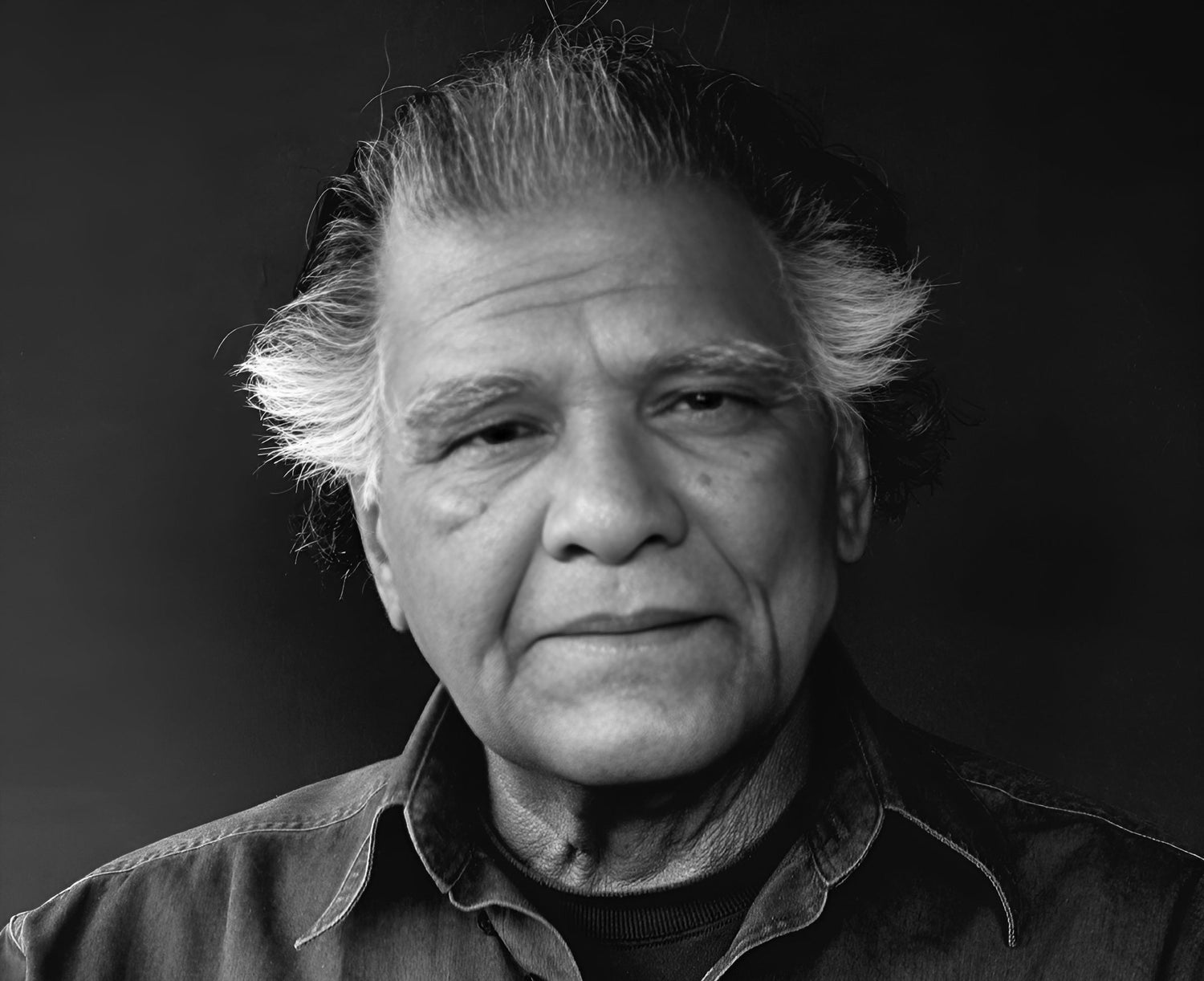
AMBADAS KHOBRAGADE
Ambadas lived and created with a quiet intensity shaped by introspection, spirituality, and a deliberate rejection of artistic convention. Born in 1922 in Akola, Maharashtra, his early artistic education began under Ravi Shankar Raval in Ahmedabad, where he focused on landscapes and figurative painting. Yet the limitations of traditional academic art soon became apparent to him, prompting a move to Bombay. There, at the Sir J. J. School of Art from 1947 to 1952, Ambadas studied alongside peers such as Tyeb Mehta, Akbar Padamsee, and Mohan Samant, who would all become important figures in modern Indian art.
Rooted in Gandhian ideals and a minimalist way of life, Ambadas’s artistic journey was one of constant inward exploration and renewal. His work as a textile designer at the Weavers’ Service Centre brought him into contact with pioneering modernists like J. Swaminathan, Rajesh Mehra, and Himmat Shah. Together, these artists co-founded Group 1890 in 1962, a radical collective determined to dismantle colonial and traditionalist aesthetics in favor of an authentic, contemporary Indian modernism. Ambadas’s mature practice emerged as a distinctive form of gestural abstraction. His paintings convey a raw, emotional energy that defies easy categorization, balancing spontaneity with deep thoughtfulness. The Lalit Kala Akademi National Award, received in 1963 for his seminal piece Hot Wind Blows Inside Me, acknowledged his innovative contributions. Further artistic exposure through travels to the United States and Germany broadened his perspective, enriching his visual vocabulary.
In 1972, Ambadas settled in Oslo, Norway, choosing relative isolation over the bustling art scenes of India and Europe. Despite this distance, his work continued to evolve with a meditative rigor and uncompromising vision. Until his death in 2012, he remained committed to a deeply personal language of abstraction that resonated beyond borders. Ambadas’s legacy endures as a testament to the power of artistic integrity and spiritual inquiry. His body of work challenges viewers to engage with art not merely as representation but as an expression of inner experience and resilience. This commitment to authenticity and exploration firmly places Ambadas among the transformative figures of Indian modern art, whose influence continues to inspire new generations.
